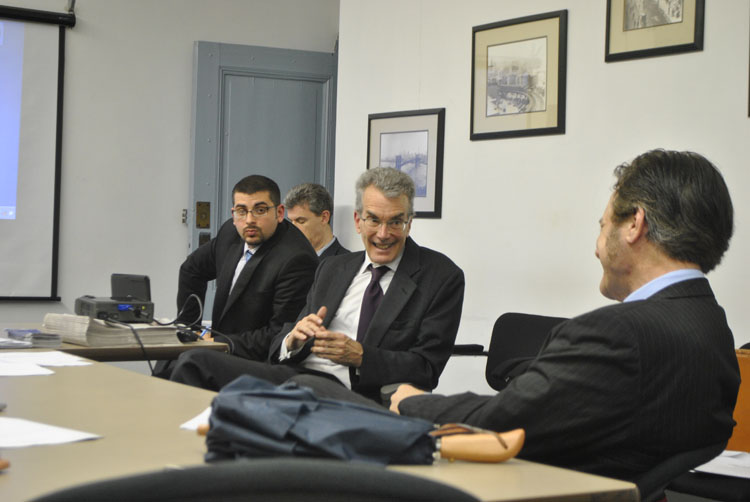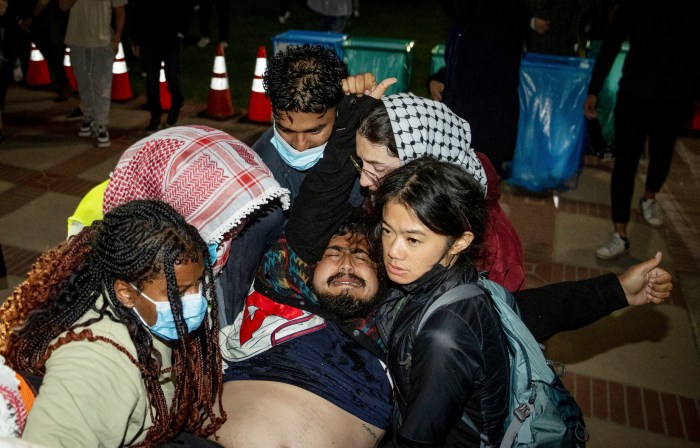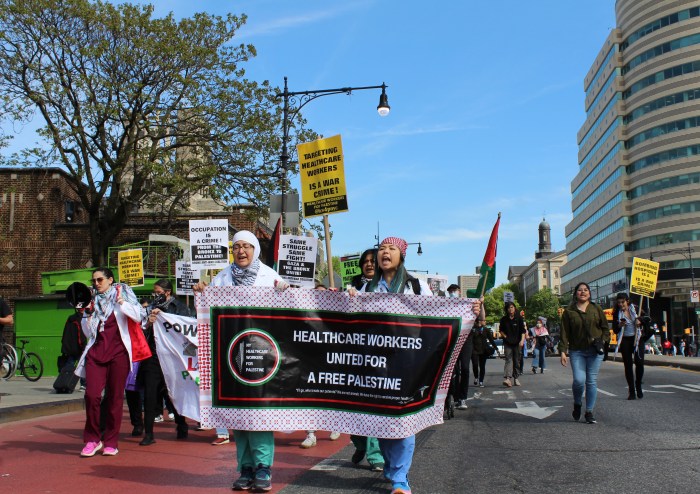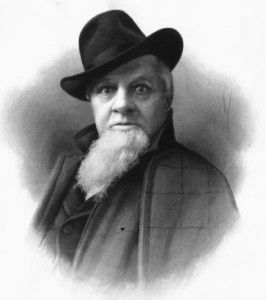
BY Aline Reynolds | Frustration and tension pervaded the room on Mon., May 16 when the Lower Manhattan Development Corporation’s President David Emil updated Community Board 1’s World Trade Center Redevelopment Committee on the status of the federal funds the agency is authorized to administer.
C.B. 1 Chairperson Julie Menin stressed the importance of Emil’s presentation.
“From an accountability and transparency standpoint, it was critical to have the meeting,” said Menin. “By having that discussion with David Emil present, it gave us some clarity in terms of where there are pockets of money remaining and where there are not.”
Emil did not, however, disclose the sums already spent in each category, disappointing many committee members who sought a fuller picture of the programs.
“The [PowerPoint] presentation could have been more helpful if there was a ‘spent’ column,” said Catherine McVay Hughes, chair of the committee. The steps the L.M.D.C. is taking to disperse the funds, she added, need to be clarified.
Committee member Joel Kopel inquired about the source of the funds for the agency’s administrative functions, including the presentation itself.
Emil summarized the L.M.D.C.’s administrative and operating budgets, which suggest that the agency could continue to exist for another two-and-a-half more years.
The L.M.D.C. still has $8.2 million left in administrative funds, having already spent close to $60 million since its inception in 2001, Emil reported. The agency’s fiscal year 2011-12 budget, which finances staffing, rent and other daily operations, is $3.2 million, leaving the agency with $5 million in remaining funds starting in fiscal year 2012-13.
Emil would not comment on the L.M.D.C.’s plans for the future.
While it has a substantial amount left in administrative monies, it is unclear how much of its overall mission the L.M.D.C. has left to fulfill. Emil indicated the agency only has a small amount of grant money left to be allocated. The L.M.D.C., he said, isn’t responsible for the delay in releasing the grants, since it doesn’t actually hold the money.
“It’s the government’s responsibility to spend the money as quickly as possible,” he said. The agency, Emil mentioned, doesn’t earn interest on the government-financed grants.
Funds yet to be distributed include $11 million for Masaryk Towers and Knickerbocker Village, two housing developments on the Lower East Side. Distribution of these funds, Emil noted, has been delayed due to a snag in the developments’ bidding actions for the money.
“There’s a lot of concern in those communities about the money not being spent,” Menin said to Emil.
Emil agreed the distribution of these funds is taking too long, and that the money should continue to be preserved for the residences and not be transferred to another funding category.
Emil also talked about the $17 million Community and Cultural Enhancement program, whose City- and State-appointed panel members were chosen in April. To the Community Board’s surprise, the panel did not include Menin.
The panel, Emil said, consists of “free-minded, independent people… who have no political allegiances and are acting in the best interest of the community.” One of the members, however, is the city’s Department of Cultural Affairs Commissioner, Kate Levin.
The “independent” grant-awarding process will be completed by the end of the summer, Emil said, once the board of directors accepts or rejects the panel’s recommendations. Community groups and businesses are expected to request a range of between $100,000 and $1 million in their applications.
Members of C.B. 1 once again expressed their dissatisfaction with Menin’s omission from the panel, which they say is lacking a desperately needed representative from the Downtown community. “I do think there’s a high level of frustration from [C.B. 1] that there isn’t community participation in this panel,” said Menin.
Earlier this month, the L.M.D.C. responded to this concern by saying that none of the members who served on the 2007 panel were selected for the current panel, and that, ultimately, the board of directors has the final say in the grant allocation decisions.
While utility companies are being awarded $500 million of the $783 million pot, $196.6 million will go toward W.T.C.-area improvements (including construction of the 9/11 memorial); $52.5 million toward 130 Liberty St.; and the remaining $33 million toward companies such as Cantor Fitzgerald, which suffered from a disproportionate loss of workforce grants.
Approximately $240 million for 130 Liberty St. and $60 million for the W.T.C. memorial site from the $2 billion pot have already been spent, according to Emil. More funding is needed for the National September 11 Memorial and Museum, as well as for the W.T.C. museum complex, to which nearly $295 million has already been allocated. Out of $60 million, $10 million have been spent on the preparation of site 1B, the location of the temporary PATH station, for the future W.T.C. Performing Arts Center.
Emil’s mention of the $143 million job creation and retention program elicited questions from the W.T.C. Redevelopment Committee. “We need to change the criteria of the program — we need to understand how much money is in it and what the criteria are for it,” said Menin.
Finally, Emil commented on the ongoing legal battle with Bovis Lend Lease, which he described as “a very complicated litigation involving tens if not hundreds of millions of dollars.”
Specifically, the L.M.D.C. is expecting compensation from Bovis in the range of $50 million. “There are a number of possible outcomes… I’d like to believe the government will prevail,” said Emil.
Emil offered assurances that the L.M.D.C. wouldn’t have to dip into the grant money to cover litigation expenses — the agency, he noted, has already set aside a certain sum to fund litigation costs. “The staff feels comfortable that the board is doing the right thing, and that we’re building appropriate reserves in the event of a loss,” he said.
In the worst-case scenario, Emil said, New York State would have to come to the rescue. “The [Empire State Development Corporation] is responsible for the debts of its subsidiary[, the L.M.D.C.],” said Emil. “Presumably, it would back up the L.M.D.C.”
McVay Hughes believes that once the agency resolves the legal problems with Bovis and allocates the remaining funds to the Downtown community, the L.M.D.C.’s mission will have been accomplished. “The L.M.D.C. needs to seriously evaluate their need for existence approaching the 10-year anniversary,” she said. “The sooner they complete their projects, the sooner the overhead to continue the L.M.D.C. can be spent in the community that was attacked. It would be a shame if money were lost in bureaucratic overhead.”












